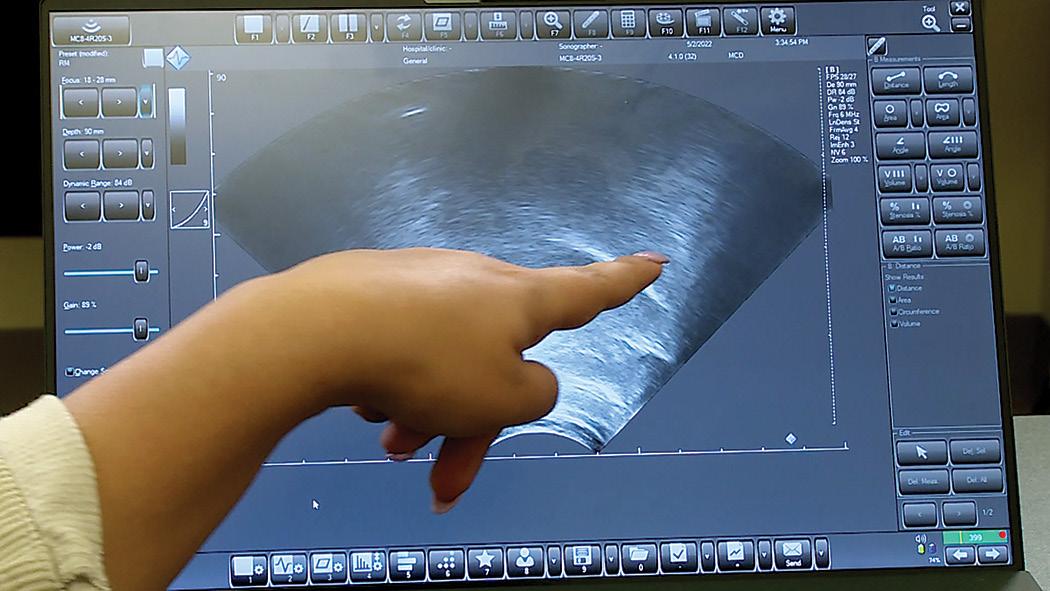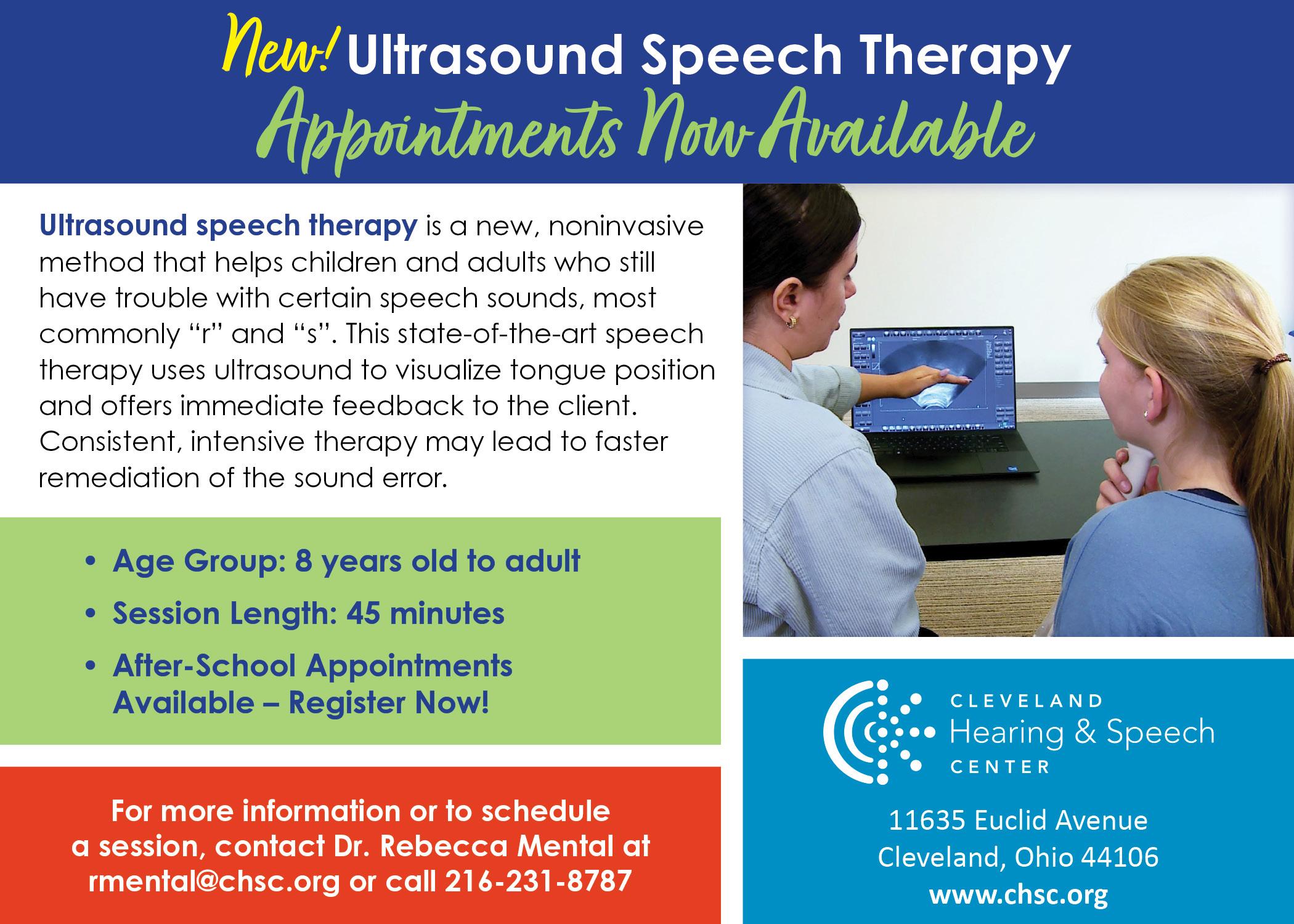
1 minute read
Ultrasound speech therapy tackles 'R' and 'S'
Ultrasound Speech Therapy Tackles ‘R’ and ‘S’ Difficulties
By Rebecca Mental, Ph.D., CCC-SLP, Director of Speech, Language and Learning Services
Does your child struggle with producing the “r” sound? Do they have a slushy “s” sound? If this is true for a child ages 8 or older, they have what is called residual speech sound disorder (RSSD).
Many children with RSSD have been in years of therapy with little to no improvement in their speech. This can be frustrating and discouraging for both the child and their parents.
The ultrasound technology may have the answer for many children with RSSD. By placing a small wand under their chin, the child is able to see their tongue moving in real-time. The child no longer has to solely depend on what they hear and how their tongue feels — now, they can see what their tongue looks like.
This type of speech therapy is called visual biofeedback, which simply means that visual feedback is available to the client that they otherwise wouldn’t be able to see. In other words, ultrasound makes speech visible. Many studies have shown that it is effective for helping adults and children produce more accurate speech. The most common sounds addressed with ultrasound are “r,” “s,” “sh” and “ch.” If you or your child is frustrated with a lack of speech sound progress, ultrasound speech therapy could be the answer. Sessions are generally 45 minutes long. For more information or to schedule an appointment, contact Dr. Rebecca Mental at rmental@chsc.org or 216-231-8787.











